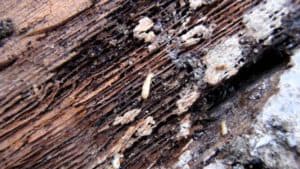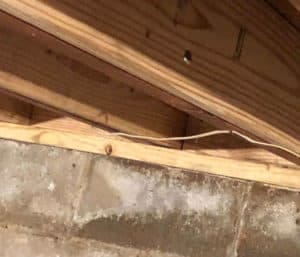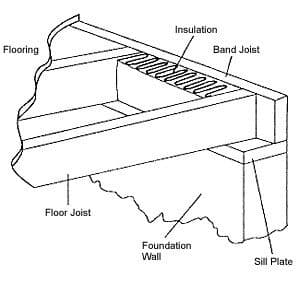Do You Have Sagging Floors? Insect Damage Could Be Responsible

Many of us expect our homes to develop creaking or sagging floors. We think it’s normal and inevitable. But just because something is typical, does not mean it should be left unchecked. While a certain amount of settling is normal, you need to make sure you don’t have any underlying issues under your home. Floors do not sag without a cause!
Acculevel has been repairing foundations and flooring structures since 1996. We are very familiar with all the circumstances that allow floors to sag or slope. And we also know that this is a situation where fixing the problem early can save you significant money later, so we want you to know the signs.
We also provide two excellent resources, free of charge, for homeowners to use. The first is our Symptom Checker:
The second is a DIY Home Inspection Checklist, which you can use as a reference guide to review your home and property. We have modeled it after our own 21 Point Inspection, which we offer to customers (at $500 for 5 years).
In this article, we’re going to review the two most aggravating insects that you need to watch for, how to detect them, and how to fix the damage they create.
Termites
Termites are the number one insect threat to your home. They will dig into your home’s structural wooden flooring structure: beams, joists, band boards, and sill plate.
Like many insects, termites are very small and hard to see. You may catch a glimpse of them in the spring, when they are swarming (looking for a suitable place for a colony).
But most of the time, you’re going to be looking for evidence they leave behind. They burrow under the top layer of the boards, to keep a protective layer of wood between them and the world. This can give the wood a slight bubbled or flaked look on the surface.
 Photo is courtesy of Angie’s List, and shows evidence of termite damage.
Photo is courtesy of Angie’s List, and shows evidence of termite damage.
The most reliable way for a homeowner to detect termite damage is from the soft or hollow spots the termites create in the wood. It’s not particularly scientific, but you can use a screwdriver to gently push on joists or other suspicious-looking beams. If the board “gives way” easily, this means you have an issue.
Powderpost Beetles
Powderpost beetles are second only to termites in their ability to damage wood structures. They’re not as infamous as termites, but they are highly problematic. If you’re like me, and have never heard of these pests, you can check out this excellent article from the Entomology Department at the University of Kentucky.
 Photo is courtesy of Entomology at the University of Kentucky, and shows the powdery residue made by the beetles.
Photo is courtesy of Entomology at the University of Kentucky, and shows the powdery residue made by the beetles.
Powderpost beetles also like to chew up wooden structures, but they have a strong preference for hardwoods like oak, walnut, hickory, etc. Like termites, you don’t normally see the insects themselves. You’re looking for the evidence they leave behind. For beetles, it’s a powdery residue they generate as they dig holes into the boards. This will look more like flour than sawdust.
How Do You Treat Wood-Damaging Insects?
Acculevel does not provide any services related to extermination, so we cannot recommend the best course of treatment, or estimate the costs of that treatment. But the EPA oversees and regulates the chemicals used in this occupation, and says any company that offers extermination services must be licensed by your state. You can ask to see the company’s license and, if you have any concerns, call your state pesticide regulatory agency.
The EPA has a Citizen’s Guide to Pest Control & Safety that gives additional advice on selecting the right contractor for you. If you are interested in services for other pests, or for more “green” methods of treatment, check out Angie’s List of Home Pest Control and Exterminators.
How To Fix the Damage They’ve Done
While we cannot help with the insects, we excel at repairing your home’s flooring structure after the exterminators have done their part.
First, let’s review the structure of your flooring:
The floor joists, band joists, and sill plate are all wooden components. The main beams that run the length of your home are also usually made of wood. All of these pieces can be viewed as tasty meals for termites or powderpost beetles.
To repair a compromised sill plate, you need to install jacks to temporarily hold up the floor joists. Once the flooring is secured, the damage sill is removed and replaced.
Floor joists are not usually replaced. This is because removing the joists entirely would cause damage to the subfloor, which is the layer your flooring is built upon. The subfloor is nailed (and sometimes also glued!) to the joists. If the subfloor is compromised, your flooring may also be damaged.
Instead, the safest way to repair a floor joist is to “sister” it. Sistering a joist means that a healthy board is placed alongside the faulty one and attached to it.
 This picture was taken by an Acculevel team member, after completing installation. The sill plate has been replaced, and the joists have been sistered.
This picture was taken by an Acculevel team member, after completing installation. The sill plate has been replaced, and the joists have been sistered.
Band boards- also called band joists or rim joists- are the wooden piece that sits on top of the sill plate. It protects the ends of the floor joists and helps support your home’s outside walls. Like floor joists, the best method for repairing band boards is by sistering.
If one of the main beams is damaged, the best option is to replace it with a steel beam. Much like replacing a sill plate, jacks are used to temporarily hold the joists in place. Once those are secured, the damaged wood is removed and replaced with steel.
The main beam is usually supported by concrete columns. But in some homes, the beam supports may be made of wood; if this is the case, they will probably need to be replaced. Adjustable steel jacks are used to replace any faulty supports.
Water Intrusion is Another Likely Issue
Many insects and pests like wood to be ‘softened’ before they make themselves at home. If you are finding evidence of an infestation, you may have water damage developing. This may not be standing water, or a major leak. High levels of humidity can be enough to cause damage. For more information about waterproofing, we have articles on basement costs, crawl space costs, and whole-house dehumidifiers.
Additional Resources
Do you want information about the costs of repairing sagging floors? We have a blog that reviews the typical pricing for these repairs.
If you have sagging floors, but do not find any signs of insect infestation, we have an article that explores the other possible causes.
And if you have not hired a contractor before and would like some guidance on how to proceed, we offer a checklist of questions you should ask.
Does Your Home Need Repairs?
If so, then you need to find an experienced local foundation company, and make an appointment. Before you sign a contract for any service, you should always verify the company is reputable, insured, and accredited by the Better Business Bureau.
If you live in Indiana or the surrounding states, contact Acculevel for a free estimate. An experienced project manager will evaluate your home and recommend the best course of action for you, to keep your home strong and healthy for years to come.

